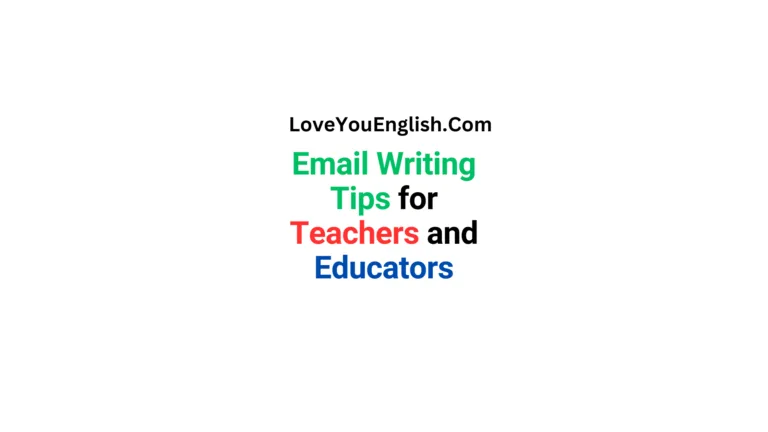How to Write a Confirmation Email for an Appointment
Sharing is caring!
Whether you are confirming a doctor’s appointment, a business meeting, or a casual get-together, writing a confirmation email for an appointment is a useful skill. It helps ensure that both parties are on the same page and that there are no misunderstandings. I will walk you through how to write a clear and professional confirmation email for an appointment.
Why is a Confirmation Email Important?
A confirmation email serves as a reminder of the scheduled appointment and gives the recipient the opportunity to make any necessary changes. It also provides clarity about the time, date, and location of the meeting. Without a confirmation email, there may be confusion about when or where the appointment will take place.
Here are some reasons why confirmation emails are important:
- Prevents Miscommunication: It ensures both parties know the correct date, time, and place for the meeting.
- Clarifies Details: Any extra information, such as preparation or documents needed, can be included.
- Shows Professionalism: Sending a confirmation email demonstrates that you are organized and value the meeting.
Step-by-Step Guide to Writing a Confirmation Email
Writing a confirmation email is simple. Let’s break it down into key steps that you should follow to make your email clear and effective.
1. Start with a Clear Subject Line
The subject line of your email is the first thing the recipient will see. It should be clear and straightforward. Here are a few examples:
- Confirmation of Your Appointment on [Date]
- Appointment Confirmation – [Date and Time]
- Your Appointment at [Location] Confirmed
This way, the recipient will immediately understand the purpose of the email.
2. Use a Polite and Professional Greeting
Always begin your email with a friendly greeting. If you know the person’s name, use it. If not, a simple “Dear [Name]” works well. If it’s a business context and you don’t know the person’s name, you can use “Dear Sir/Madam.”
Examples of greetings:
- “Dear Mr. Smith,”
- “Hello [Recipient’s Name],”
- “Dear Dr. Johnson,”
3. State the Purpose of the Email Early
Right after your greeting, state that the email is a confirmation for the appointment. Keep the language simple and to the point.
For example:
- “I’m writing to confirm our appointment scheduled for [Date] at [Time].”
- “This is to confirm your appointment with [Name] on [Date] at [Time].”
This makes it clear right away what the email is about.
4. Provide the Appointment Details
Next, clearly list the important details of the appointment. These details should include the date, time, and location (or a link if the meeting is online). If there are any special instructions, such as what the recipient should bring or how they can prepare for the appointment, make sure to include that too.
Here’s how to lay out the details:
- Date: Include the full date, such as “Monday, January 25, 2025,” to avoid any confusion.
- Time: Mention the time zone if the appointment involves people from different locations.
- Location: Include the full address or a link to the virtual meeting platform (such as Zoom or Google Meet). If the meeting is in-person, consider adding parking or building information if necessary.
- Preparation/Instructions: If there is anything the recipient needs to bring or prepare, mention it clearly. For example, “Please bring your ID” or “Prepare any documents for the meeting.”
Example:
- “Your appointment is confirmed for Monday, January 25, 2025, at 2:00 PM at our downtown office located at [address].”
- “The meeting will be held via Zoom. Please join using the following link: [link].”
5. Add a Polite Closing Line
Once the details are confirmed, include a polite closing remark. Express your willingness to accommodate if there are any changes or offer help if necessary.
Here are some options:
- “If you need to reschedule or have any questions, please feel free to reach out.”
- “Let me know if you need any further information.”
- “If you need to cancel or reschedule, kindly inform us as soon as possible.”
6. Finish with a Professional Closing
End your email with a courteous sign-off. Use simple and professional phrases, like:
- “Best regards,”
- “Sincerely,”
- “Kind regards,”
Then, sign your name and title if appropriate.
Example:
- “Best regards,
Manoj Sharma
[Your Job Title]”
7. Optional: Attach Any Relevant Documents
If there are any documents or links the recipient needs for the meeting, attach them to the email. For example, if it’s a business meeting, you might attach an agenda or contract.
Make sure you mention in the email that the attachments are included, so the recipient knows to check for them. For example:
- “Please find attached the agenda for our meeting.”
- “I have attached the document you requested.”
Sample Confirmation Email
Let’s put everything together. Here’s a sample of a confirmation email for an appointment:
Subject: Confirmation of Your Appointment on January 25, 2025
Dear Mr. Smith,
I am writing to confirm your appointment with Dr. Johnson on Monday, January 25, 2025, at 10:00 AM. The meeting will be held at our clinic, located at 123 Health Street, City, Zip Code.
Please arrive 10-15 minutes early to complete any necessary paperwork. If you need to reschedule or have any questions, feel free to contact me at [Phone Number] or reply to this email.
Thank you, and we look forward to seeing you soon.
Best regards,
Manoj Sharma
Receptionist
Tips for Writing a Good Confirmation Email
Here are some extra tips to make your confirmation emails even better:
- Be concise: Keep your email short and to the point, focusing only on the most important details.
- Check for accuracy: Always double-check the date, time, and location to make sure there are no errors.
- Use a professional tone: Even if the appointment is informal, it’s best to maintain a professional tone in your email.
- Proofread: Before sending your email, make sure to proofread for any spelling or grammatical mistakes.
Common Mistakes to Avoid
While confirmation emails are easy to write, it’s important to avoid common mistakes:
- Forgetting the details: Missing out on crucial information like the time, date, or location can cause confusion.
- Too much information: Don’t overwhelm the recipient with unnecessary details. Stick to the key points.
- Being too informal: Even for casual appointments, it’s best to keep the language polite and professional.
Conclusion
Writing a confirmation email for an appointment is an important step in ensuring smooth communication between you and the other party. By following these simple guidelines, you can create clear, professional emails that prevent confusion and demonstrate your attention to detail.
Remember to:
- Use a clear subject line
- Provide essential details (date, time, location, and instructions)
- Keep the tone polite and professional
- Double-check for accuracy before sending
By following these steps, you can write confirmation emails with confidence, whether you’re confirming a business meeting, a doctor’s visit, or a casual gathering.
Read more:
Sharing is caring!






